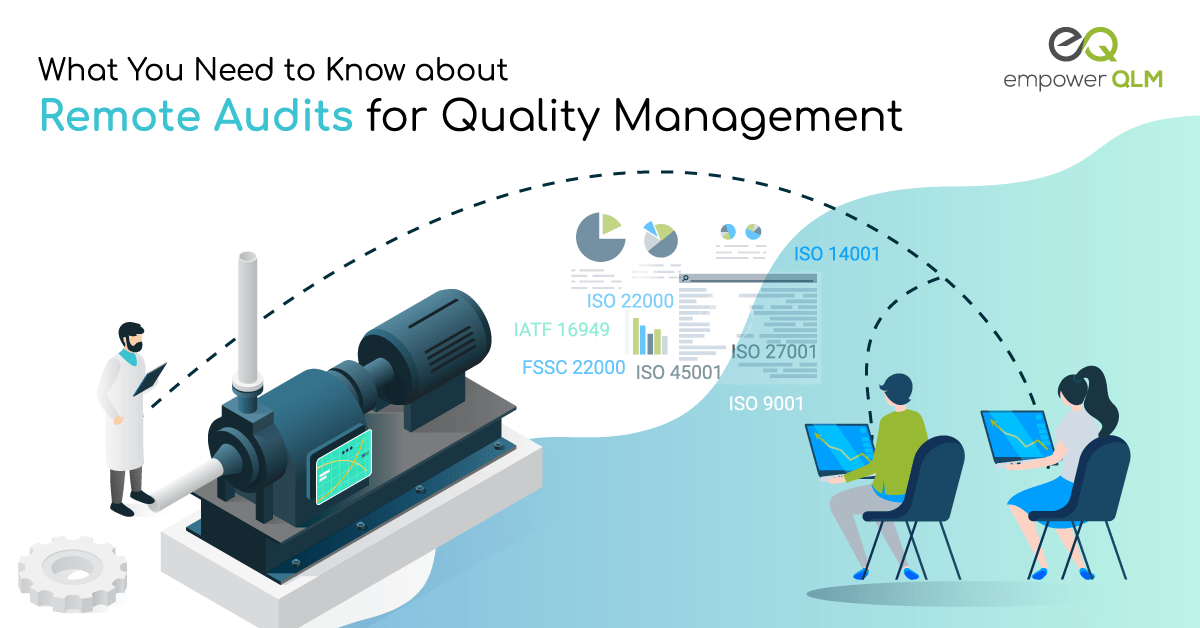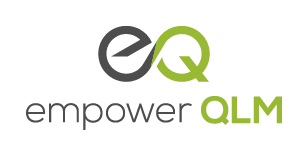
What You Need to Know about Remote Audits for Quality Management
Remote auditing uses the approach to conduct audits with more flexibility in accomplishing audit objectives for quality management. In part, remote audits have gained traction due to the new global circumstances created by COVID-19. The silver lining is remote audits provide feasibility in many other scenarios as well where an auditor can’t willingly or mandatorily be present. For example, auditing a facility that handles explosive chemicals or gaining entry across global borders. Further, remote audits offer a way to stay in compliance while protecting health and safety and decreasing time and travel expenditures.
Thanks to modern technology such as video conferencing, screen sharing, smart glasses, and real-time data analysis, remote audits are possible. A secure cloud-based QMS, such as Empower QLM, provides a safe virtual environment to organize and conduct remote audits.
What quality audits can be conducted remotely?
Any process that doesn’t require on-site, in-person validation can be performed remotely. IAF and ISO guidelines are provided by regulating entities to properly conduct remote audits. The following standards are eligible for remote audits to be conducted in partial or in full.
- ISO 9001 (Quality Management)
- ISO 14001 (Environment Management)
- ISO 45001 (Health & Safety Management)
- ISO 27001 (Information Security Management)
- IATF 16949 (Automotive Quality Management)
- FSSC 22000 (Foundation Food Safety System Certification)
- ISO 22000 (Food Safety Management)
How to determine if a remote audit is a possibility?
ISO and IAF guidelines, accreditation entities, and certification entities provide the methodology in which remote auditing is applicable for quality management. For first- and second-party audits, the customer or internal company determines eligibility.
- First-party audit – the audited company audits itself internally based on their own parameters (internal determination).
- Second-party audit – a customer conducting an audit on its suppliers to ensure compliance with quality requirements (customer determination).
- Third-party audit – auditing firm independent of the supply chain relationships audits a company for the purposes of compliance, certification, or registration (ISO and IAF guidelines).
Benefits of Remote Audits
Expand Global Reach
- Access to the right auditors with the right credentials irrespective of their geographic location.
- Multiple sites anywhere in the world can be included in one audit to have improved visibility, and control from a high level.
Get Audits Done Quickly
- Audits can be scheduled with simplified planning and on shorter notice.
- Reduce travel time so staff and auditors can spend more time working vs traveling
- Keep audits on schedule without delays from travel and restrictions.
- Use a QMS to organize all documents and information and information communication technology (ITC to ICT) for an effective process.
Meet Mandates Irrespective of Unforeseen Conditions
- Maintain certifications by overcoming restrictions on physical presence.
Overcome Time, Travel, and Resource Constraints
- Using modern technology to share files and interact saves a lot of time and money.
- Commuter expenses are eliminated.
- Obtain access to more credited resources on a budget
- Allow more people to attend the audit virtually for more value-added expertise.
How are remote audits conducted?
Just like in-person audits, remote audits follow a similar process to gather the necessary evidence and verification. However, remote audits do require some additional planning and preparation to ensure the audit goes as smooth as possible. A remote audit plan must clearly identify:
- What is being audited? A process, product, and/or system?
- Who will be present at the audit? Internal staff, external experts, and/or third-party auditor?
- When will it be audited? What date and time will the audit take place?
- How will the audit be conducted? How will you video conference and share information virtually? Technology that is needed?
Necessary Technology for Remote Audits
Thanks to modern technology such as video conferencing, screen sharing, smart glasses, and real-time data analysis, remote audits are possible. A combination of different information and communication technology (ITC to ICT) systems are used to accomplish audit objectives.
Examples of ITC applications in Remote Audits
- Video conferencing technology (Zoom, Teams, Skype, etc.) – conduct interviews, give guided tours.
- Screen sharing technology (Zoom, Teams, Skype, etc.) – review documents and findings by sharing access of a computer screen.
- Live stream video technology – view high risk/hazardous worksites and analyze operations.
- QMS technology – catalog documents, processes, and practices and schedule the audit.
Empower QLM has scheduling, progress status, and submission performance dashboard features to ensure full visibility, traceability, and transparency of all your requirements.
In addition, an agreement is executed to protect intellectual property (IP) prior to a remote audit occurring. This includes restrictions on recording, screenshotting, or photographing any part of the live virtual process tour and IP documents. Information sharing is secure and protected within Empower QLM with controlled access and is never shared through open-source platforms such a social media (i.e. YouTube).
Why you need a QMS for remote audits?
A secure cloud-based QMS (quality management system), such as Empower QLM, provides a safe virtual environment to organize and conduct remote audits. Companies that use a QMS have an advantage in performing remote audits. The technology makes it easy to navigate documents that are interlinked with related information to understand findings correspondent to an identifiable source.
Key functions of a QMS that are extremely useful during the process include:
- Document management – documents and records are stored securely and easy to find during an audit with full traceability.
- CAPA management – identify non-conformances prior to an audit and implement resolution.
- Supplier management – create supplier profiles and distribute/collect supplier audit self-assessments in preparation for an audit.
- Reporting and analytics – provide quantitative metrics of performance as evidence during the audit and monitor ongoing performance.
With Empower QLM, overseeing remote audit compliance is simple with the ability to upload files and share pictures, videos, and documents in one virtual space. Electronic document control saves a lot of time as well. All evidence can be uploaded and linked to the appropriate sections, including files, pictures, and videos, so evidence is relevant, organized, and available instantly in the cloud, accessible from anywhere.
Conclusion
Alternative audit approaches such as remote audits have been pushed quickly as a standard practice around the world due to the pandemic’s impact on the market. As a result, long-term benefits are notable by opening the doors to a more flexible way to conduct audits. Remote audits allow companies to access a greater pool of expertise without the restriction of physical location having an impact, eliminate travel costs, and save time for a more efficient audit process. Modern ITC and QMS technology provide a gateway for effortless remote audit through virtual collaboration and real-time file sharing.
About Empower QLM
Empower QLM, a division of RGBSI, is a cloud-based quality management system (QMS) for total quality lifecycle management (QLM). It establishes compliance with industry-specific standards. From product conception through manufacturing, Empower QLM provides complete transparency by connecting all relevant parts of the supply chain.
Empower QLM for Remote Audits
Empower QLM is the cloud-based QMS that makes remote audit management a breeze. Establish automated workflows to manage all audit steps and processes virtually from anywhere. Different audit requirements such as internal audits, supplier audits, or system audits can be fully managed with remote approval management. The scheduling, progress status, and submission performance dashboard features ensure full visibility, traceability, and transparency of all your audit requirements.
If an audit can’t be done remotely, Empower QLM’s global team can act on your behalf in an onsite, in-person capacity. Use an Empower QLM auditor to conduct onsite audits in geographic locations with travel restrictions or constraints. In addition, live video sessions can be held for any in-person audit with Empower QLM software as the supporting platform.
- Manage audits and suppliers across the entire supply chain with real-time updates.
- Use our template-based architecture to customize/create audits as needed.
- The necessary audit tools to stay compliant with industry-specific quality standards.
- Establish a feedback loop for audit planning, preparation, conducting, reporting, and results.
- Visibility over all global quality programs across plants in one place.
Need help with audits?
Download Empower QLM Software Overview Brochure
